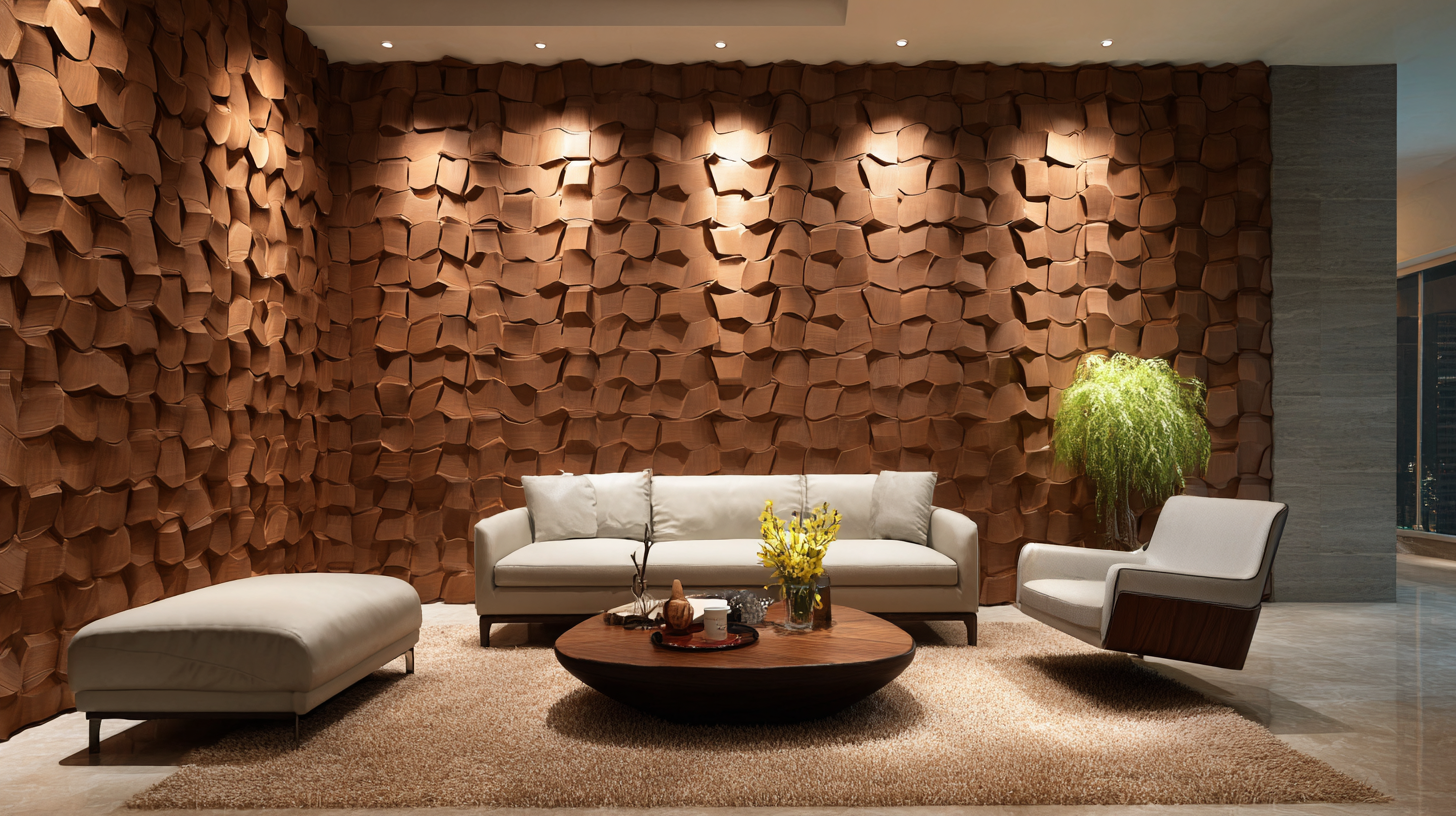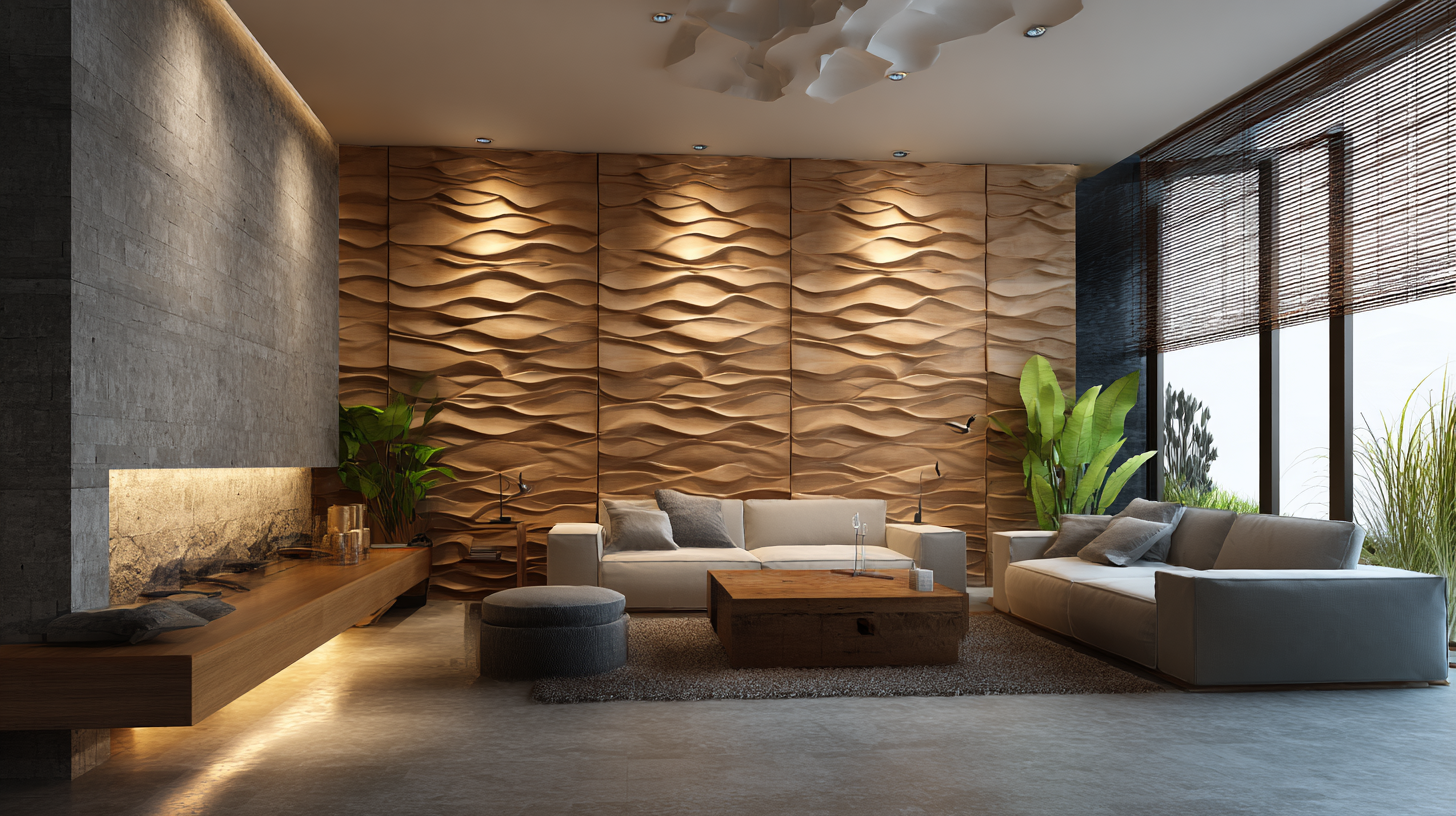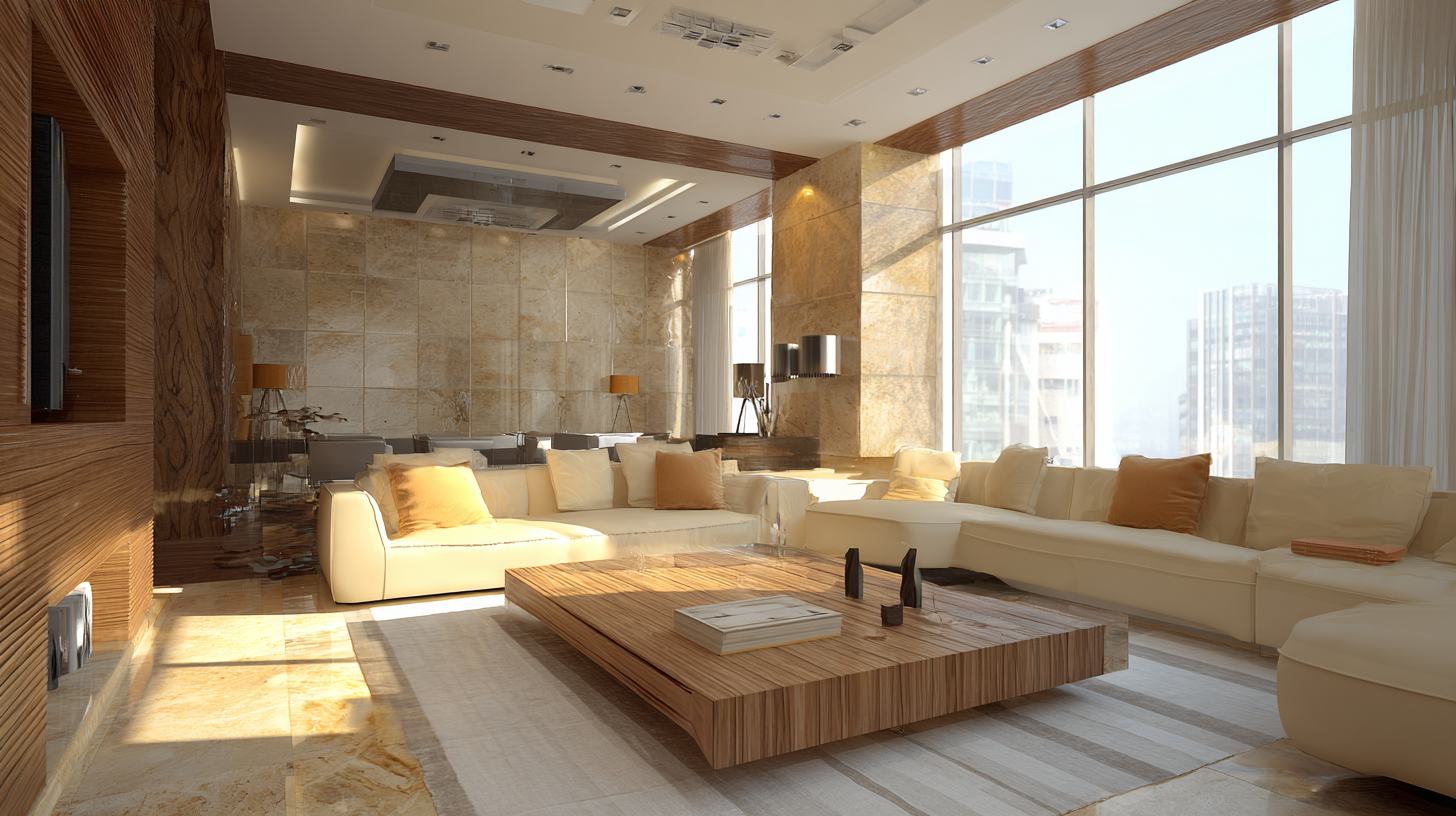Shandong Xiangying New Materials Technology Co., Ltd.
Shandong Xiangying New Materials Technology Co., Ltd.
As modern interior design continues to evolve, innovative materials are emerging to redefine spaces in both functional and aesthetic ways. One such material making waves in contemporary interiors is the WPC wall panel interior. These panels, known for their versatility and sustainability, are increasingly being leveraged by designers to create stunning environments that reflect unique styles and preferences.
 From residential homes to commercial spaces, WPC wall panels offer a myriad of creative applications, allowing for bold statements through texture, color, and design. This blog will explore the future of WPC wall panel interiors, showcasing inspiring examples and discussing how they can seamlessly integrate with various design themes, ultimately enhancing the beauty and functionality of any space.
From residential homes to commercial spaces, WPC wall panels offer a myriad of creative applications, allowing for bold statements through texture, color, and design. This blog will explore the future of WPC wall panel interiors, showcasing inspiring examples and discussing how they can seamlessly integrate with various design themes, ultimately enhancing the beauty and functionality of any space.
WPC wall panels, made from wood-plastic composites, offer a versatile solution for modern interior design. One innovative way to incorporate these panels into living spaces is by using them as feature walls. A bold accent wall made of WPC can create an eye-catching focal point in a room, whether it’s behind a sofa in the living room or as a backdrop for an entertainment center. The wide range of textures and colors available allows homeowners to express their style, from rustic charm to sleek contemporary designs.
Another creative application is to use WPC panels as room dividers. They provide a stylish way to define spaces in open-concept living areas without sacrificing light or airiness. By selecting panels with unique patterns or finishes, you can create a visually appealing partition that adds depth and character to your home. Additionally, the durability and moisture resistance of WPC makes it an excellent choice for high-traffic areas or humid environments, ensuring that your design choices stand the test of time.
This chart illustrates the popularity of WPC wall panels in various living spaces, highlighting their innovative applications in modern interior design.
In the realm of modern interior design, WPC (Wood Plastic Composite) wall panels are emerging as a versatile solution, particularly when it comes to transforming ceilings. These panels not only enhance aesthetics but also offer durability and a range of styling options that traditional materials cannot match. Their ability to mimic natural wood finishes without the maintenance requirements makes them an attractive choice for contemporary spaces.
When incorporating WPC panels into your ceiling design, consider playing with different textures and finishes. A seamless, smooth finish can open up a room, while textured panels can add depth and interest. Additionally, using contrasting
colors or patterns can help you achieve a unique visual hierarchy, guiding the eye throughout the space.
Tip: To maximize the impact of WPC panels, install LED lighting along the edges. This will create an ambient glow that highlights their features and enhances the overall mood of the room.
Moreover, WPC panels are lightweight and easy to install, allowing for creative layouts that aren't limited by cumbersome materials. This flexibility encourages designers and homeowners alike to experiment with shapes and designs.
Tip: Consider using angled or sloped panels to create dynamic ceiling lines that draw attention and provoke curiosity, making your interior truly stand out.

WPC wall panels, composed of wood-plastic composites, are redefining modern interior design with their sustainable attributes. As the demand for eco-friendly materials grows, WPC panels stand out for their recyclability and reduced environmental impact. Unlike traditional wood, these panels conserve precious forests and minimize the use of toxic adhesives and finishes often found in conventional products. This makes them an excellent choice for those looking to enhance their spaces while being mindful of the planet.
In addition to their ecological benefits, WPC wall panels offer versatility in design. They can be easily customized to fit a variety of aesthetic preferences, from rustic to contemporary. Their durability ensures a long-lasting solution that requires minimal maintenance, making them both a practical and stylish option for interior spaces. Whether used in residential or commercial settings, the incorporation of these panels not only elevates the visual appeal but also aligns with a commitment to sustainability, allowing designers and homeowners alike to create inspiring environments that reflect a greener ethos.

In modern interior design, combining materials can elevate spaces and create unique aesthetics. WPC (Wood Plastic Composite) wall panels, with their versatility and durability, serve as an excellent foundation for mixing different design elements. These panels can be integrated with sophisticated lighting solutions and innovative textures, enhancing the visual experience of any room. For instance, pairing WPC panels with sleek metal accents or natural stone can create dynamic contrasts that captivate the eye.
As we embrace the importance of sustainability in design, the integration of WPC panels with eco-friendly elements, such as photovoltaic surfaces, becomes increasingly relevant. The emergence of advanced materials, like those utilizing perovskite technology, allows for the incorporation of renewable energy solutions in building design. In this way, interior spaces not only reflect personal style but also contribute positively to environmental efforts. By thoughtfully crafting these combinations, designers can transform everyday interiors into functional art, promoting both style and sustainability.
WPC (Wood Plastic Composite) wall panels are gaining traction in modern interior design, offering a versatile choice for DIY enthusiasts to infuse personalized elements into their spaces. Their lightweight nature and ease of installation make them ideal for innovative projects, allowing homeowners to create accent walls, decorative partitions, or even ceiling designs. According to recent market reports, the global WPC wall panel market is poised for growth, driven by increased consumer interest in sustainable and stylish interior solutions.
As you embark on your DIY journey, consider the various applications of WPC panels. Solid panels offer durability and resistance to moisture, while hollow panels provide additional insulation and a lighter option for larger installations. With the projected market expansion in residential uses, particularly in single-family homes, the demand for unique interior spaces is on the rise. By incorporating WPC wall panels, homeowners can easily achieve high-end aesthetics without compromising on practicality, making them a favored choice for personalizing interiors in 2024.
